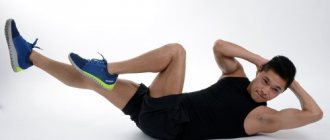Running is an affordable and effective sport. Running can seriously improve your health and improve your physical fitness.
The benefit of running is that during jogging almost all the muscles of our body are occupied, and trained muscles are the key to healthy joints. In addition, running helps strengthen the cardiovascular system; during jogging, blood circulation improves and oxygen flows to the tissues. Running can improve your well-being, overcome depression, and develop qualities such as will and determination. And jogging in the fresh air is a good means of hardening and balances the nervous system.
But running is useful if the training is done correctly. While running, you need to monitor your physical condition, pulse, and breathing. Running shoes should be comfortable and suitable for you. We’ll talk about what you need to know about running and how to run correctly in this article.
Physiology of running
Running is one of the main methods of movement, carried out using the coordinated activity of skeletal muscles and limbs. Its main difference from race walking is the presence of a flight phase, when both legs are torn off the surface. This moment significantly increases the impact load on the runner's feet and ligaments.
But at the same time it allows you to increase your movement speed. With constant exercise, the body develops an active blood supply not only to the muscles, but also to organs, including the brain. Which in turn affects the increase in body tone and improvement of mental activity. However, the increased load on the body imposes a number of demands on people who want to go jogging.
Before you start regular exercise, you need to check your body’s readiness for this kind of load in terms of weight. If you are overweight, you will need to do exercises aimed at burning fat and strengthening muscles and ligaments. This will avoid injury at the initial stage.
It is also worth taking up dietary nutrition to speed up the results. The basic rule here is to spend more calories than you take in. Only after this should you start jogging. For those who consider themselves healthy, you can go straight to the basics.
Choosing clothes and shoes for training
Training will be useful if the person is completely comfortable in clothes and shoes.
Clothes for activities should absorb sweat, but not stick (so as not to rub), and be durable. Material made from cotton or cotton with synthetic admixtures is suitable. In summer, shorts and a T-shirt are worn for jogging; in winter, an autumn windbreaker and pants are worn. Choose semi-fitted items.
Sneakers are chosen that will protect the legs and internal organs from injury. Components taken into account:
- Depreciation. Sneakers with shock absorption (thickening of the sole on the heels and forefoot) help to gently bounce off the surface without causing shaking of the joints and internal organs. Many running shoe manufacturers cushion the heel more than the rest of the foot, as if to encourage runners to push off from the heel. This technique is dangerous. A beginner can’t do it without any cushioning either, because the technique hasn’t been perfected yet. For many, a flat sole 4-5 cm thick is suitable. The average “mileage” of sneakers is 1000 km. After this figure (after six months of active training), the sole wears off and they are replaced.
- The presence of special shock-absorbing inserts for those who have an abnormal arch of the foot.
- Sole surface type. For flat surfaces (for example, asphalt), a flat sole is suitable. For uneven surfaces, buy shoes with ribbed soles.
- Sneaker fabric that allows air to pass through.
- Flexibility, no pressing folds. The right sneakers make it easy to bend your feet.
- Consolidation. Sneakers with Velcro and zippers are prohibited. Only laces are allowed.
- Size. For running shoes, take a size larger, but one that is well secured. It is better to try it on in the evening, when the leg has “diverged” during the day and has become larger.
- Weight. The average weight of sports shoes is 400 g. They are well-fitted if you run lightly.
- Examination. Before active use for running, sneakers are tested by walking. If you can comfortably walk 10 km in them, then they are suitable.
Correct running technique
Correct technique allows you to get tired less, and the result will be faster. There is a basic principle: maximum distance at minimum cost. It follows from this that there should be nothing superfluous in movements that waste valuable energy.
- Running without bouncing. Strong vertical movement of the body leads to waste of forces to absorb the shock load. Movements should be smooth and directed horizontally.
- Run without sideways swing. This is achieved by placing the outer parts of the feet in one line. Compliance with this condition leads to an optimal step length.
- Correct foot placement. It's individual. Depends on the skeleton. However, the soft positioning of the foot by rolling from heel to toe is the most common and is suitable for jogging.
- Step width. It should be such that it allows you to take three steps per second without excessive effort.
- Straight body. The body should not be tilted or twisted, the head should be in the same vertical line with the spine. This achieves a minimum of effort to support the body. It is also easier to breathe deeply with this technique.
- Rhythmic breathing. The main thing in running is breathing. Two steps, inhale, two steps, exhale. You can breathe both through your nose and mouth. But breathing through your mouth is easier.
Running dynamics
Work and hand position while running
Dynamics starts with the hands. It is the hands, as a system of levers, that help in jogging. Your arms should be bent at the elbows at 90 degrees, your palms facing your body, your fingers slightly clenched. In this position, it is easiest for the arms to move in an arc parallel to the body with a minimum of effort. You should not press your hands to your chest or, conversely, swing them excessively. Since in such cases the body will twist, and this must be avoided, since there is excessive muscle work and this reduces the internal volume of the lungs, making it difficult to breathe easily and fully. Both of these factors lead to premature fatigue.
As for the body, it should be kept straight and upright. In this position, minimal load is placed on the stepping leg. The shoulders help the arms work, but we must remember that twisting the torso when jogging is unacceptable. Also, with the body and head in a straight position, there is less load on the spine and muscles of the body.
Footwork and position while running
Now let's talk about the legs. During the landing phase on the supporting leg, it should be left slightly bent at the knee. This will prevent harmful stress on the knee joint. If this does not happen, it means that the leg is thrown too far forward and you need to shorten your step.
A simple rule also allows you to control the length of your step - the supporting leg should touch the surface directly above the center of gravity. That is, under the body. Next, the same leg pushes off when the other leg is already moved forward.
All movements must be smooth and avoid shock loads. Proper running is almost silent. If a person kicks, it means he is doing something wrong or he is already tired and needs to take a break to rest.
Proper breathing while running
The main obstacle to continuing running is the lack of oxygen. Let's talk about breathing. In endurance exercises for running, it plays a major role. During training you should not talk or chew gum. Nothing should make it difficult to breathe in and out. At the first steps this may seem unimportant, but over the course of the distance these factors will make themselves felt.
There are many misconceptions about how to breathe correctly, through the mouth or through the nose. All athletes breathe through their mouth. An exception is running in winter conditions, when you inhale through your mouth and exhale through your nose.
When jogging at a medium pace, the optimal rule is to inhale and exhale equally. Inhale two steps, exhale two steps. More trained runners work according to the rule of three steps inhale, two exhale.
Warm-up and cool-down
First of all, you need to warm up. The essence of the warm-up is to warm up the muscles and ligaments, making them elastic and ready for stress. The heart rate increases, and increased breathing saturates the blood with oxygen. If you don’t do this, you will feel tight muscles during exercise. Fatigue will come faster.
After training, you may experience muscle pain. If an increased load is given without warming up, for example a fast sprint, then a muscle spasm or sprain is possible. In other words, warming up prepares the body for stress, reducing the risk of injury.
List of warm-up exercises:
- Circular movements of the head in both directions
- Circular rotations with arms in both directions
- Lateral bends alternating with body twisting
- Squats alternating with jumping jacks
After a thorough warm-up, you should catch your breath for 2-3 minutes and you can start training.
After jogging, you need to let your body know that the load is over. And gradually begin stretching exercises. To gradually reduce the load on the heart muscle, you need to switch from running to a sports step within 3-5 minutes. After this, you can move on to stretching.
It is good to do it on sports grounds where there are ladders or wall bars. These exercises are basic for stretching the large muscles of the legs.
List of cool-down exercises:
- Deep lunges forward with support on a bent leg and rocking to achieve maximum amplitude.
- Bend the body forward on straightened legs to reach the feet with the palms of the hands.
- Bend the leg at the knee back with your hand pulling it behind the foot to stretch the quadriceps.
How to start running correctly for a beginner: 9 useful tips

When you have just started running, you have enough desire to continue training. But then you get your first sprain, and all your motivation goes away. To follow your dreams with minimal risk of injury, follow a few simple tips.
- Choose the right shoes. Modern sports stores offer a wide range of suitable running shoes. Here you will find sneakers with shock-absorbing inserts and abrasion-resistant elastic. Simply put, for every taste and budget. You can read more about how to choose the right clothes for jogging in the paragraph of the article on how to choose the right clothes for running for beginners.
- Calculate an individual training program. This is a very important point. Nothing will discourage the craving for sports more than muscle pain and cramps the next day. If you think you can run more, don't overload yourself on the first day of training. Coaches advise sticking to the 10% rule. It is by this percentage that you need to increase the load and intensity each subsequent week.
- Before training, be sure to warm up. Stretch all the muscles in your body to avoid unexpected sprains and injuries.
- At first, forget about speed. Start the program gradually. A beginner should start training with a fast walk or a slow jog. If you feel that your breathing is out of breath, it means that your running speed does not correspond to your level of training, go to a walk.
- Find like-minded people. Friends will always support you in a new endeavor. Especially if your interests are similar.
- Don't forget to drink water. Let us immediately note that the water must be clean and without gas. Maintain your drinking regime correctly. The daily amount of fluid consumed by an adult is 1.5-2 liters per day. If you exercise intensively and want to lose weight, nutritionists advise drinking up to 3 liters of water per day.
- Choose days to run. To achieve visible results, run at least 3 days a week. This is enough to restore the body. If you miss a workout for certain reasons, don't try to catch up on your next run. Just enter your usual program plan.
- Eat right. And we are not talking about diet here. On the contrary, you will have to abandon all kinds of weight loss programs during training. Nutrition should be balanced and supply the body with vitamins and minerals. You will have to give up fatty foods and your favorite hamburgers.
- Create a training program. In it you can specify not only the distance, but also certain days for jogging and rest. Try to stick to the plan. Build it according to your strengths and fitness level. Don't demand too much from yourself.
Proper nutrition when running
Training takes away most of the energy stored by the body. In order not to feel a loss of strength while jogging, you need to pay attention to what you need to eat. Eating should be no later than 60-40 minutes before jogging. It depends on the metabolism of the individual. Complex carbohydrates are encouraged, as they are the fastest to digest.
It can be:
- Porridge
- Fruits and vegetables,
- Low-fat yoghurt or kefir,
- Fruit juices, etc.
The main thing is that by the start of training the stomach is not completely loaded, and instead of training the athlete is puzzled by heartburn or heaviness in the stomach. You should avoid eating while jogging. However, drinking is also not recommended.
If it is very hot outside and you are thirsty, then it would be better to move your jogging to a less hot time of day. After training, you can replenish fluid loss in the body. Depending on your personal schedule, you can start eating 20-30 minutes after your run.
How not to get bored on the track?
This question is very relevant, because monotonous exercises often get boring. Write down our tips - they will definitely be useful to you:
- If you are interested in how long beginner athletes should run, we recommend targeting 40-60 minutes. This is the best time to warm up and not get too tired. Be sure to alternate running with walking - this makes the workout less monotonous;
- Rotate the parks you run in. Also, change the running surface: asphalt, sand, gravel, grass. In the future, we also recommend alternating types of running - intervals, shuttles, sprints, long cross-country, etc.
- Run to music or listen to audio books;
- Greet oncoming runners with welcoming gestures so as not to lose your breath;
- If you want to learn how to start running long distances quickly, aim for high-quality training strictly on a schedule. Also, increase the difficulty of the exercises by 10% every week;
- Keep a running diary - write down in it how much you ran, time, feelings, and other details. Special gadgets or applications on your smartphone will help you track parameters.
At the end of the article, we will once again remind you why you should start running and how such a habit is useful. Running not only helps improve your health and lose weight, it is an excellent antidepressant and an ideal tool for relieving stress. On a treadmill in the park, left alone with your thoughts, you can concentrate on important tasks and find a sudden solution. This is a good opportunity to relax after a busy day at work, or, conversely, to cheer up and fully wake up in the morning.
Time and place of classes
There are no special restrictions for running. Each athlete adheres to his own daily routine and free time. Of course, it is worth taking into account the daily biorhythm of a person. Running at midnight is not a good idea. Most people jog in the morning, after a light snack, but before eating their main breakfast.
If the schedule does not allow this, then training begins from 7 to 9 o’clock. After dinner and a little rest after work. Very good places to exercise can be stadiums, running tracks or parks. Since jogging around the city in a crowd of passers-by will not bring much pleasure.
How to choose a place to run?
When choosing a place to run, try to avoid frequently crossing the road, especially in places not marked for crossing. A useful addition would be the presence of natural barriers in the form of ascents and descents.
There are several options for where you can run.
Stadium. The most comfortable place for running training. The bases of the stadiums differ, but all have a place reserved for running, a flat surface and the presence of horizontal bars, parallel bars, stairs to complete the workout and stretch the muscles.

Parks. Convenient place for jogging. The parks feature a lot of trees and fresh air. The paths have a flat surface, which means you don’t have to worry about the possibility of an ankle sprain. People walking in the park are unlikely to become a serious nuisance.
Streets. Running along the city streets is a good option if the rest of the infrastructure is far away or does not meet the requirements for training. The downside is the high content of exhaust emissions in the air, because sidewalks are located along roadways. Otherwise, it’s just as suitable for jogging as a park.
Forest. The presence of natural barriers in the forest is a good incentive to train. Changing the surface topography in the form of sand, leaves and cones will allow you to train your overall endurance. Running through the forest is more difficult, but the number of calories burned is higher.
How to run without losing muscle mass
Many professional athletes involved in gaining muscle mass are afraid of losing the gained volume. Here it’s worth remembering the basic rule of bodybuilding: consume more calories than you expend.
If you follow a diet to gain muscle mass, then 15-minute jogging for cardio stimulation will not reduce muscle mass, but will warm up the body well, preparing it for stress. Of course, professional athletes do not need such advice during the pre-competition period and have developed specific training plans for themselves.
How to run correctly to pump up your legs
To increase muscle volume through running, you need to make changes to your training technique. The basic rule works: volumes increase with increasing weight load. In this sense, running up a steep hill is useful. This activity is characterized very well by the feeling when your legs are already weak, but there is no shortness of breath yet.
The second recipe for pumping up your leg muscles by running is sprinting in a ragged mode. 100 meters jog, 100 meters sprint. The rule of gradually increasing the load should be followed to prevent injury. If a person is interested in bodybuilding, then instead of jogging, it is worth using training with the help of simulators, since they are the most effective in terms of gaining muscle mass.
How to quench your thirst?
During training, the body uses up energy and water reserves. To make up for the lack of essential elements, drink drinking water without gases. You should drink no more than 3 sips every 15 minutes of running.
After training, it is useful to drink mineral water. Mineral water contains dissolved salts and trace elements that leave the body through sweat.
Be careful. The bottle label that says carbonated drinking water does not contain salts, because. in its essence it is distilled water with gases. Choose water labeled “mineral” – this water should have a slightly salty taste. By the way, this is why sweat has a salty taste.
Jogging is the most accessible way to lose weight, build up leg muscles, overcome fatigue and even quit smoking. However, the maximum benefit is achieved by understanding how to run correctly and following running technique. Therefore, watch your movements while running, breathe correctly and be happy!
How to run to improve your health
For a permanent positive effect from running, you need to constantly train. The very fact of jogging in the morning or after work should become a habit of the body. Over time, the duration and range will increase, and with them pleasant changes in figure, vitality and habits will occur. Perseverance and adherence to rules and techniques during training, as well as proper nutrition, can bring the body into better condition throughout the year. In the winter, it’s worth moving to gyms with exercise machines and continuing to run there.
The right approach to constant training will improve a person’s physical condition. The daily routine will normalize and the blood pressure will return to normal. Excess weight will gradually disappear. All these changes will occur gradually. The main thing in classes is consistency and perseverance; these are the qualities that help improve your condition every day throughout your life.
When is the right time to run?
The time of day matters when running. The main difference between training in the morning and in the evening is intensity. In the early hours of the day, the body is not ready to perform loads of increased complexity. It is better to do a long workout at a low pace in the morning. In the evening, the intensity can be increased by reducing the training time.
In the morning the pulse is lower than in the evening. This is the main argument for running at an easy pace and not even breaking a sweat. The body has just woken up, and a high load will lead to rapid fatigue that will remain for the whole day.

The evening is good for strength training. It's a good time to go to the gym and do some leg exercises. For example, barbell squats, leg curls, or bench leg presses.

If we talk about seasonal changes, winter is good for training endurance and willpower. The right equipment will help you avoid getting sick and improve your health. Summer is a good time to develop speed-strength abilities and work on running technique.










